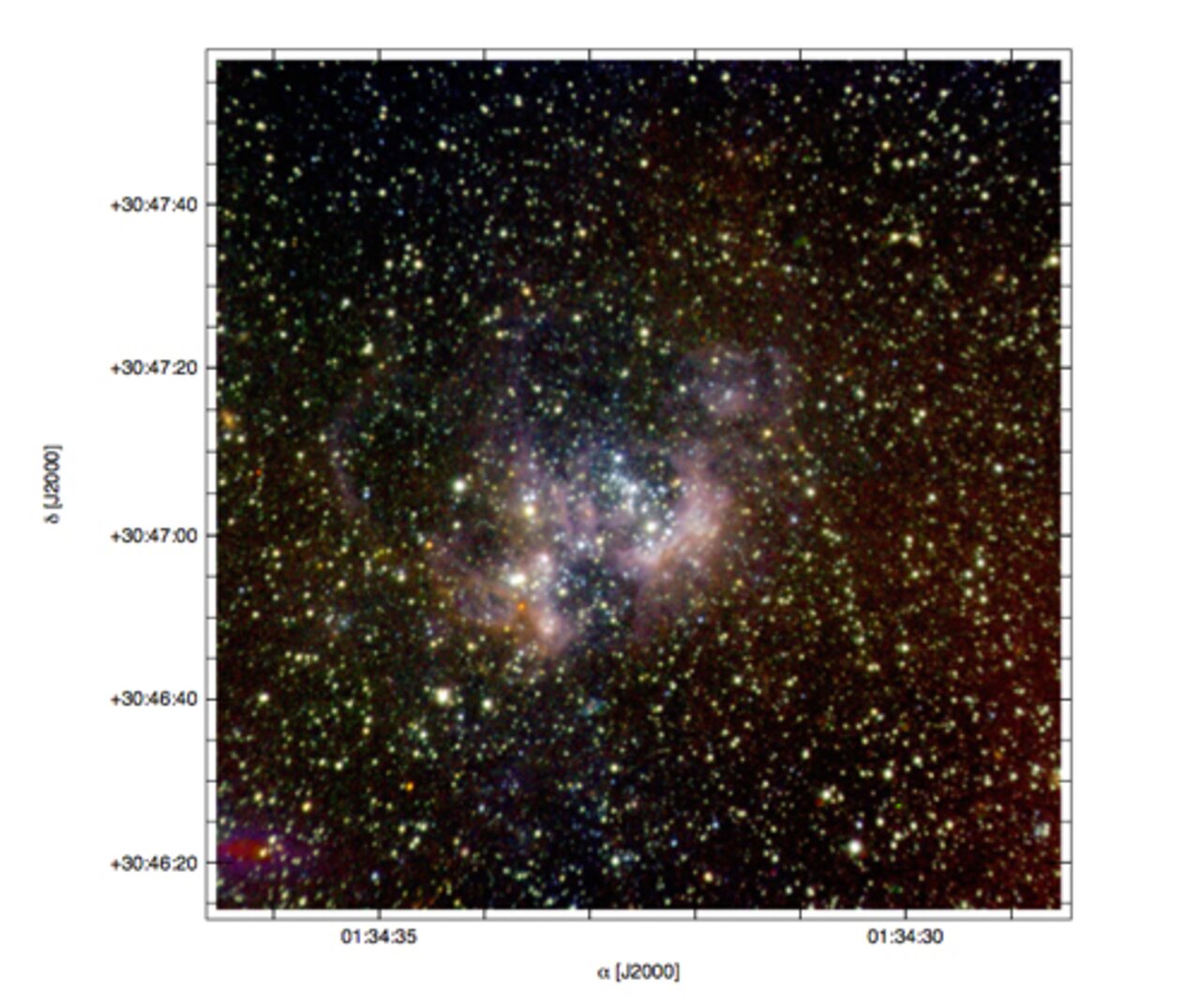Unveiling the Next Generation of Stars in M33
December 15, 2011
December 20, 2011

Massive stars form in giant HII regions, and other galaxies in the Local Group offer some of the best views of the largest ones. Despite these advantages, the dusty environments of star formation present an intrinsic challenge, as they block the emergence of visible light. Thus, near-infrared (NIR) observations are valuable, with the longer-wavelength light able to penetrate the dust. Recently, Cecilia Fariña (Universidad Nacional de La Plata and IALP-CONICET, Argentina) and collaborators took advantage of these benefits, using the Near-infrared Imager and Spectrometer on Gemini North to take deep, multi-band observations of NGC 604, a giant star forming region in M33 (geminiann11016a). The second-most luminous giant HII region in the Local Group, after 30 Doradus, NGC 604 offers the contrast of star formation spread broadly across a large area (~10,000 square parsecs or ~100,000 square light-years), as opposed to being centrally concentrated.
The primary objective of this work was to identify likely massive young stellar objects. The team succeeded in finding 68 candidates, from excess infrared emissions. Circumstellar material emits most of the NIR excess, and most of the suggested massive young stellar objects are located against a background of (being possibly embedded in) nebular emission. Significantly, this substantial population of young objects points to a current generation of star formation, in addition to the older population of the main central cluster of NGC 604.
To identify and measure distinct knots of star formation at a distance of 840 kpc (2700 ly), the crowded field required fine angular resolution. The team obtained the observations in good seeing, with the 0.35 arcsecond full-width at half-maximum corresponding to about 1.5 pc (5 light-years). The team also reviewed the known properties of Wolf-Rayet and other emission-line stars, considering their possible contamination of the NIR excess sample.
Links
- The article has been accepted for publication in The Astronomical Journal and the preprint can be found here.
